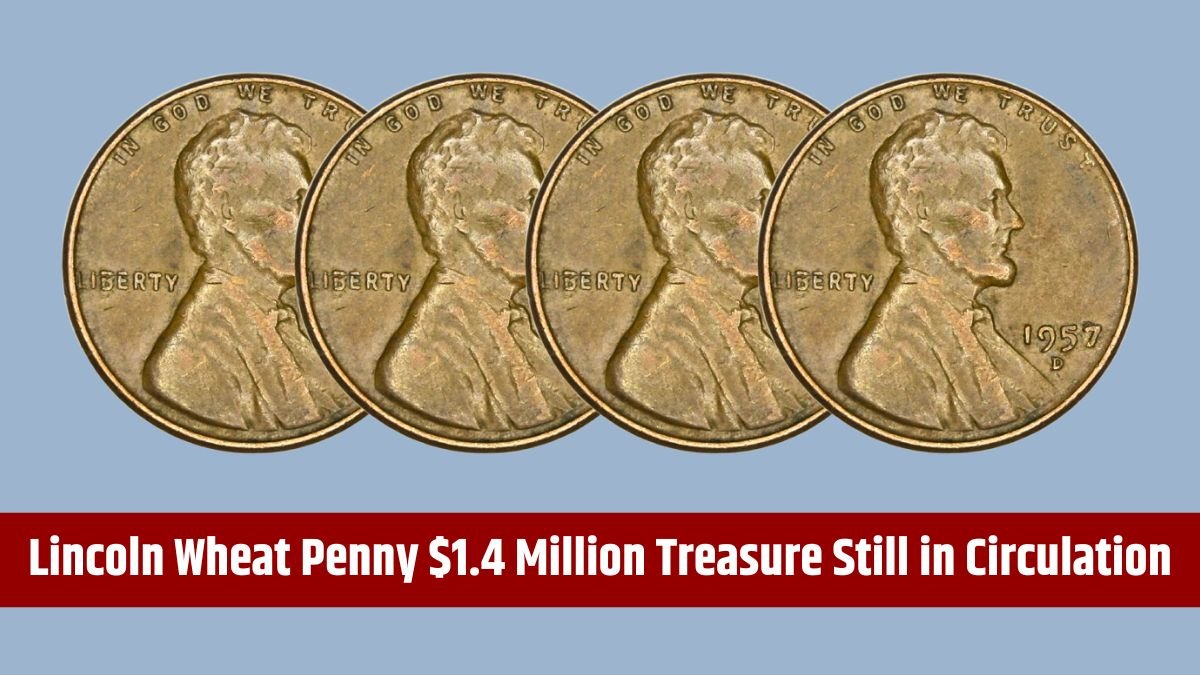Have you ever imagined finding a rare coin in your pocket that could instantly change your life? Believe it or not, a single Lincoln Wheat Penny has been valued at an astonishing $1.4 million, and the exciting part is—it might still be out there in circulation!

For coin collectors and history enthusiasts, discovering a rare penny is like striking gold. But what makes this particular penny so valuable? Let’s dive into its fascinating history, uncover why it holds such a high value, and most importantly—learn how you can identify one yourself!
The Legacy of the Lincoln Wheat Penny
The Lincoln Wheat Penny, first minted in 1909, holds a special place in American coinage. Designed by Victor D. Brenner, it was the first-ever U.S. coin to feature a real historical figure—Abraham Lincoln. This marked a significant departure from earlier coin designs, which primarily depicted Lady Liberty or symbolic images.
Unique Design & Symbolism
- Obverse (Front): Features a detailed profile of Abraham Lincoln, honoring his legacy as one of America’s most influential presidents.
- Reverse (Back): Displays two wheat stalks, symbolizing prosperity, abundance, and the nation’s agricultural roots.
The coin remained in circulation until 1958, with millions of them produced over the years. However, despite their commonality, certain versions of this penny—due to rare minting errors—have become extremely valuable.
The $1.4 Million Penny: What Makes It So Special?
Among all Lincoln Wheat Pennies, the 1943 bronze penny stands out as one of the most legendary and sought-after coins in history. While most 1943 pennies were made of steel, a handful of bronze pennies were accidentally minted—turning them into rare collector’s treasures.
A Rare Minting Mistake That Made History
During World War II, copper was in high demand for war materials such as shell casings and electrical wiring. To conserve this essential metal, the U.S. Mint made a crucial decision—they switched from copper-based pennies to zinc-coated steel pennies in 1943.
However, a few leftover bronze planchets from 1942 mistakenly made their way into the coin presses. These were used to mint a small number of 1943 pennies in bronze, instead of the intended steel. This accidental production error created one of the rarest and most valuable coins in U.S. history.
Why Is It Worth $1.4 Million?
The 1943 bronze penny is valuable for three major reasons:
✔ Extreme Rarity: Only a handful of these coins are known to exist, making them highly sought after by collectors.
✔ Historical Significance: It represents a unique moment in U.S. history during wartime metal conservation.
✔ High Demand: With so few in existence, wealthy collectors and auction houses compete fiercely to acquire them.
In one record-breaking auction, a single 1943 bronze penny was sold for an astonishing $1.4 million, proving just how valuable these tiny copper coins can be.
How to Identify a Rare 1943 Bronze Penny
If you’re wondering whether you might have one of these valuable pennies in your possession, here are a few key identification tips:
1. Check the Year Carefully
Look at the mint date on the penny—it should read 1943. This is the first step in verifying whether your coin could be rare.
2. The Magnet Test
Since most 1943 pennies were made of steel, they will stick to a magnet. However, the rare bronze pennies will not be magnetic. If your 1943 penny doesn’t stick to a magnet, you might have a hidden treasure!
3. Examine the Color
- A genuine 1943 bronze penny has a reddish-brown hue, similar to regular copper pennies.
- A standard 1943 steel penny will have a silvery-gray appearance due to its zinc coating.
4. Professional Authentication
If you believe you have a 1943 bronze penny, don’t rush to sell it immediately. Instead, get it professionally authenticated by a coin grading service such as PCGS (Professional Coin Grading Service) or NGC (Numismatic Guaranty Corporation). These experts can confirm its authenticity and help you determine its true value.
Other Valuable Lincoln Wheat Pennies
While the 1943 bronze penny is the most famous, there are several other Lincoln Wheat Pennies that can also fetch significant prices in the collector’s market. Some of the most notable ones include:
- 1909-S VDB Penny – The first Lincoln penny, with a rare designer’s mark, can be worth thousands of dollars.
- 1914-D Penny – Due to its low mintage, this penny is highly valuable, with prices reaching $5,000 or more.
- 1922 No D Penny – A rare minting error where the Denver mint mark was omitted, making it an extremely valuable find.
These pennies prove that even a simple pocket change can sometimes hold great worth!
Could a $1.4 Million Penny Still Be in Circulation?
One of the most exciting aspects of rare coin collecting is the possibility that valuable pennies could still be out there.
While most 1943 bronze pennies have already been discovered and sold at auctions, experts believe that a few could still be in circulation. Occasionally, people find rare coins in everyday pocket change—a reminder that unexpected treasures might still exist in the most ordinary places.
A Simple Mistake Turned into a Million-Dollar Treasure
The story of the 1943 bronze Lincoln Wheat Penny is a perfect example of how a small minting error can turn an ordinary coin into an incredible fortune. These rare pennies remind us that history, mistakes, and luck all play a role in making collectibles so valuable.
Final Thought: Check Your Pocket Change!
Finding a 1943 bronze penny is like winning the lottery—it’s extremely rare but not impossible. Who knows? The next time you reach into your pocket for spare change, you might just discover a hidden fortune waiting to be uncovered!
